| Dragon 1/72 Dornier Do 335A-0 Construction |
| |
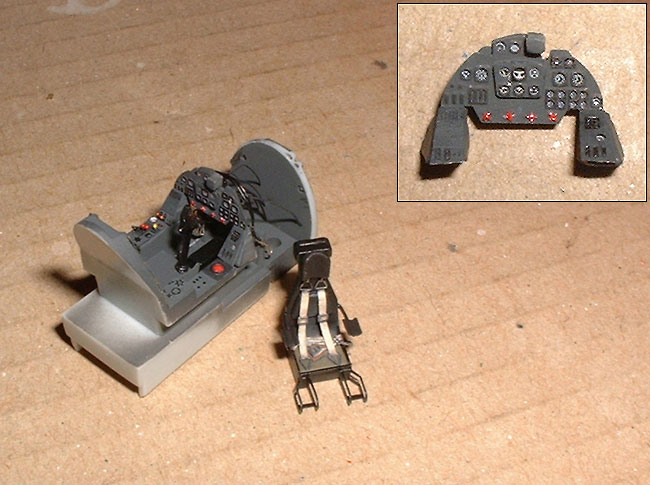 |
|
Above: The Eduard
etched set really spruces up the cockpit. I used a Gunze Sangyo black "Gundam
Marker" to pick out the instrument bezels and other details which worked
a treat; far easier and neater than trying to paint them. I have no idea
what the whole Gundam thing is all about, I've only seen enough to know
it interests me about as much as knitting or taxidermy does. Not at all
in other words, but at least the fine point marker is useful.
Below: The hollow metal Moskit
exhausts are absolutely superb, what a shame they've all but become extinct
on this planet. They don't even require painting as they have a nice burnt
metal finish to them straight out of the packet. |
| |
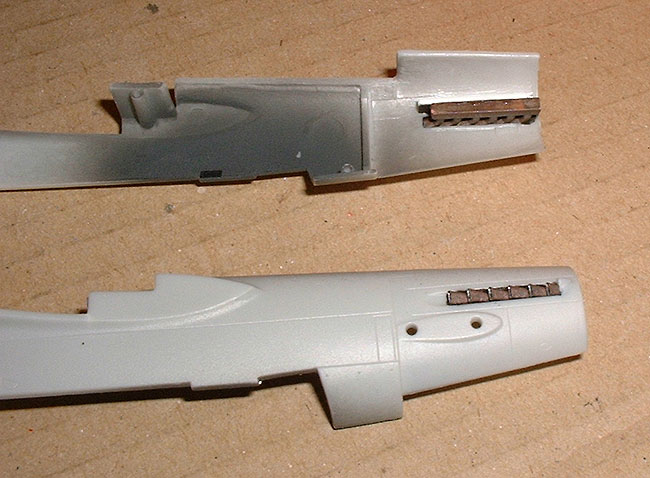 |
|
| Below: This
is where the test fitting and pre-planning come in. Because Dragon tried
to get as many different versions as possible out of the same basic kit,
the additional parts don't always fit so well, or at all. Left to their
own devices, the poor fitting upper fuselage parts would overhang the sides
and create a very ugly step that would take an even uglier amount of filler
to put right. By test fitting the parts and adding internal spreader bars
which have been carefully cut to the correct size, little or no filler should
be required on these joins. |
| |
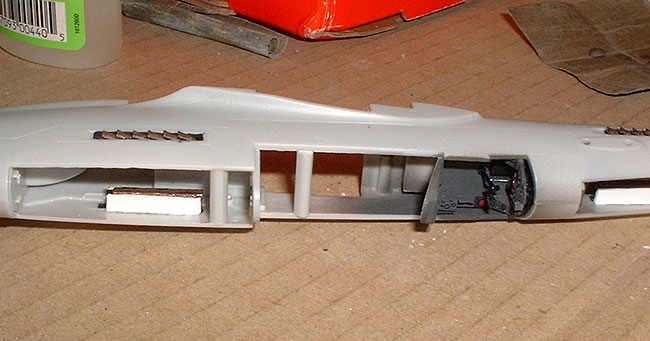 |
|
| Below left:
I thought I had added more than enough nose weight, and there was, until
I got right near the end of the build. As soon as that rear prop went on
the Do 335 promptly sat on its tail and refused to get back up. Oh dear.
Fortunately, the front prop was a fairly tight fit so I didn't bother to
glue it on. Even more fortunate, some years ago I had picked up a pack of
fishing weights of various sizes and the smallest of these - about 1.5mm
in diameter - just fit through the hole for the prop shaft. Using fine point
tweezers, each tiny weight was dipped in epoxy and fed through the hole
until I finally got the Dornier up off its ass. I lost track of just how
many it took after I'd shoved 20 of the little lead bastards in there. |
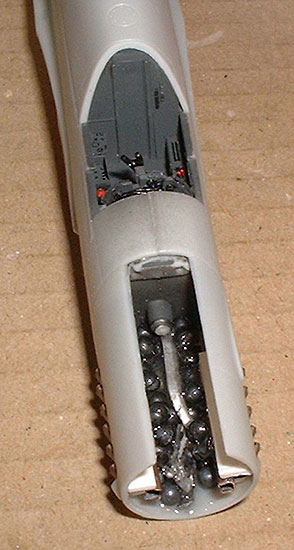 |
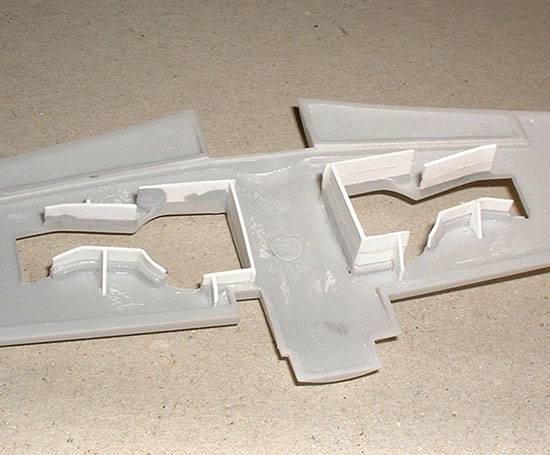 |
| Above:
Dragon only give you half a wheel well so the sidewalls need
extending to fill the gaps. I used .030" sheet for this, blending
them in with Mr. Surfacer and then sanding them until the upper wing
half fits on. This takes a lot of test fitting to ensure the new sidewalls
fit snugly against the inside of the top wing half without interfering
with the fit of the lower wing half. The well on the left is finished
and the right one has just been started. The seperate leading edges
have been glued on now instead of after the top & bottom wing
halves have been assembled as the instructions would have you do it.
These are not one of the better fitting parts in the kit but glueing
them on now makes for a slightly better join. |
|
| Below: The next
two pics show the finished main wheel wells, the huge gap in the nose wheel
well and the .005" plastic sheet used to close this up. |
| |
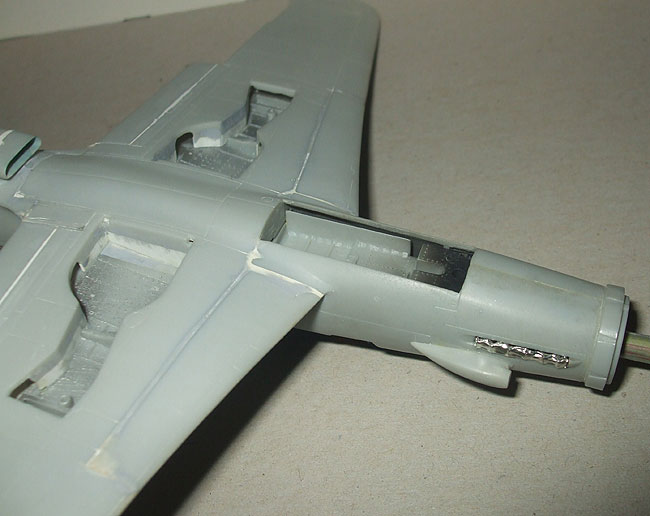 |
|
| |
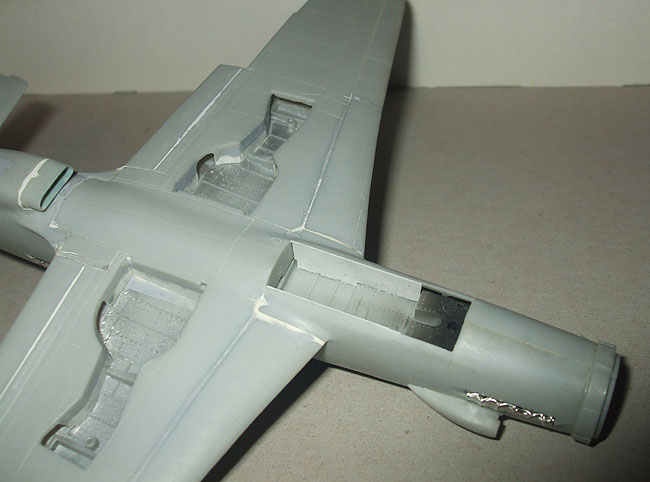 |
|
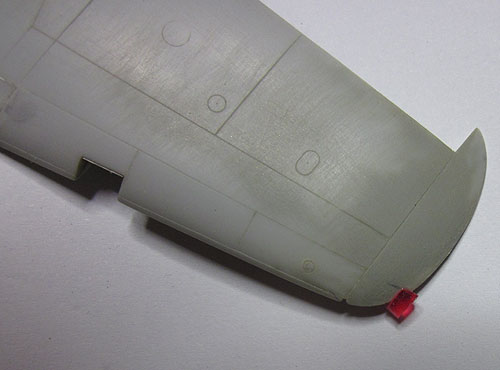 |
Left:
Navigation lights aren't represented at all in the kit, not even by
a scribed line. I used the good old tried and tested method of tiny
chunks cut from pieces of clear red and green toothbrush handles.
The position of the lights was marked on the tips then filed out.
This was painted silver and the blocks of plastic were super glued
in place. |
|
| Right:
Once dry, the navigation lights were filed and sanded to shape then
made nice and shiny with polishing cloths. I give the lights a thin
overcoat of the appropriate clear colour to darken them up a bit as
a final finishing touch. Obviously the nav lights need to be masked
off when painting the airframe, but then, you knew that. |
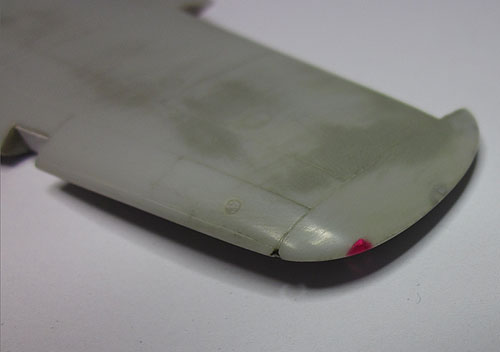 |
|
| |
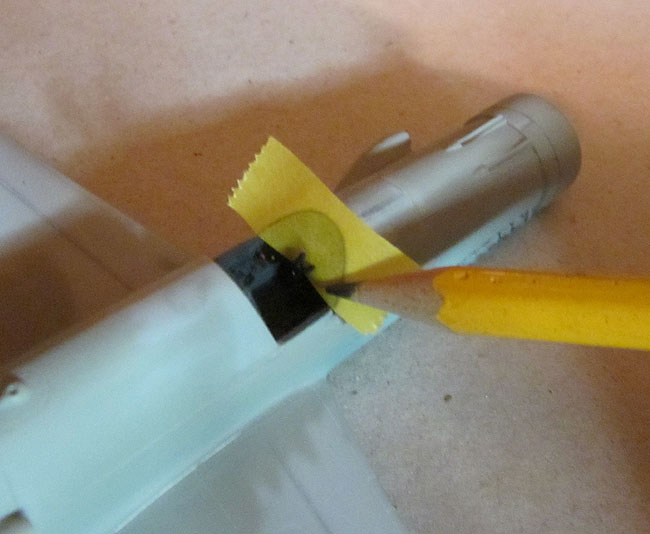 |
|
| Above and below:
I find masking canopies challenging at the best of times, but with the added
complication of a detailed cockpit with many easily broken sticky-out bits
in the way it can be even more, err... fun. Vacform canopies in particular
are tricky as the edges are thin and don't give the tape much to adhere
to. And they wonder why I like WWI aircraft. My usual method as seen here
is to use the edge of a pencil to precisely mark out the outline of the
canopy/windscreen on a piece of tape. This is then stuck to a piece of glass,
cut out and re-applied to the windscreen. The other areas are filled in
with thinner pieces of tape. Any gaps or lumpy bits that tape doesn't like
are masked with Humbrol Maskol. The horizontal frames and the frames on
the hinged portion of the canopy were done with painted decal strips after
painting was complete. |
| |
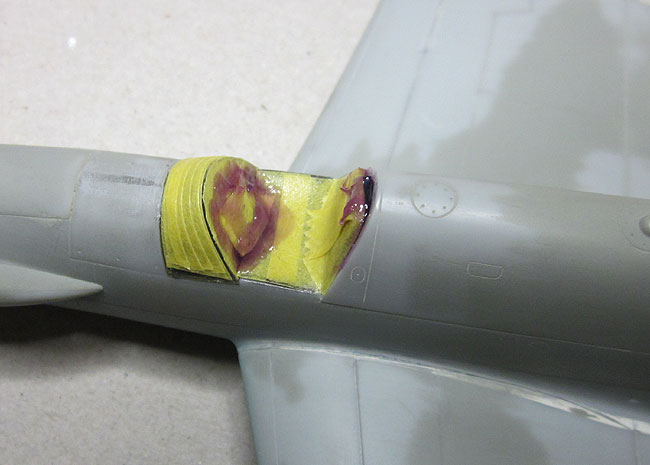 |
|
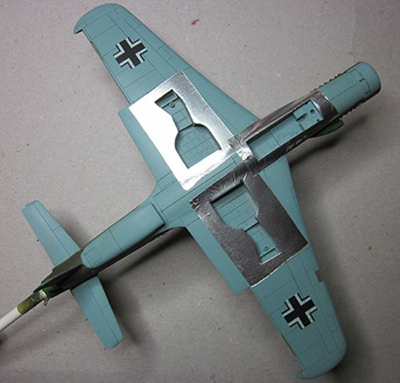 |
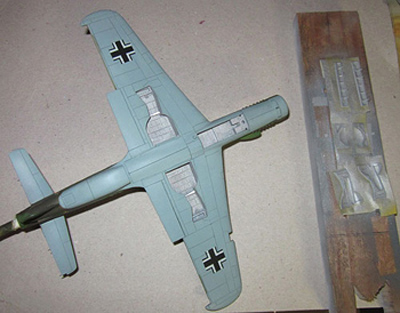 |
| Wheel wells were masked with Bare
Metal Foil which I always find the quickest and easiest way to mask
odd shapes like this. The restored Do 335 is bare metal in the wheel
wells and inside of the doors and I went with this, figuring Dornier
probably had more to worry about late in the war than what colour
their wheel wells were painted. |
|
| |
 Back to Do 335 Main Page Back to Do 335 Main Page |
| |












